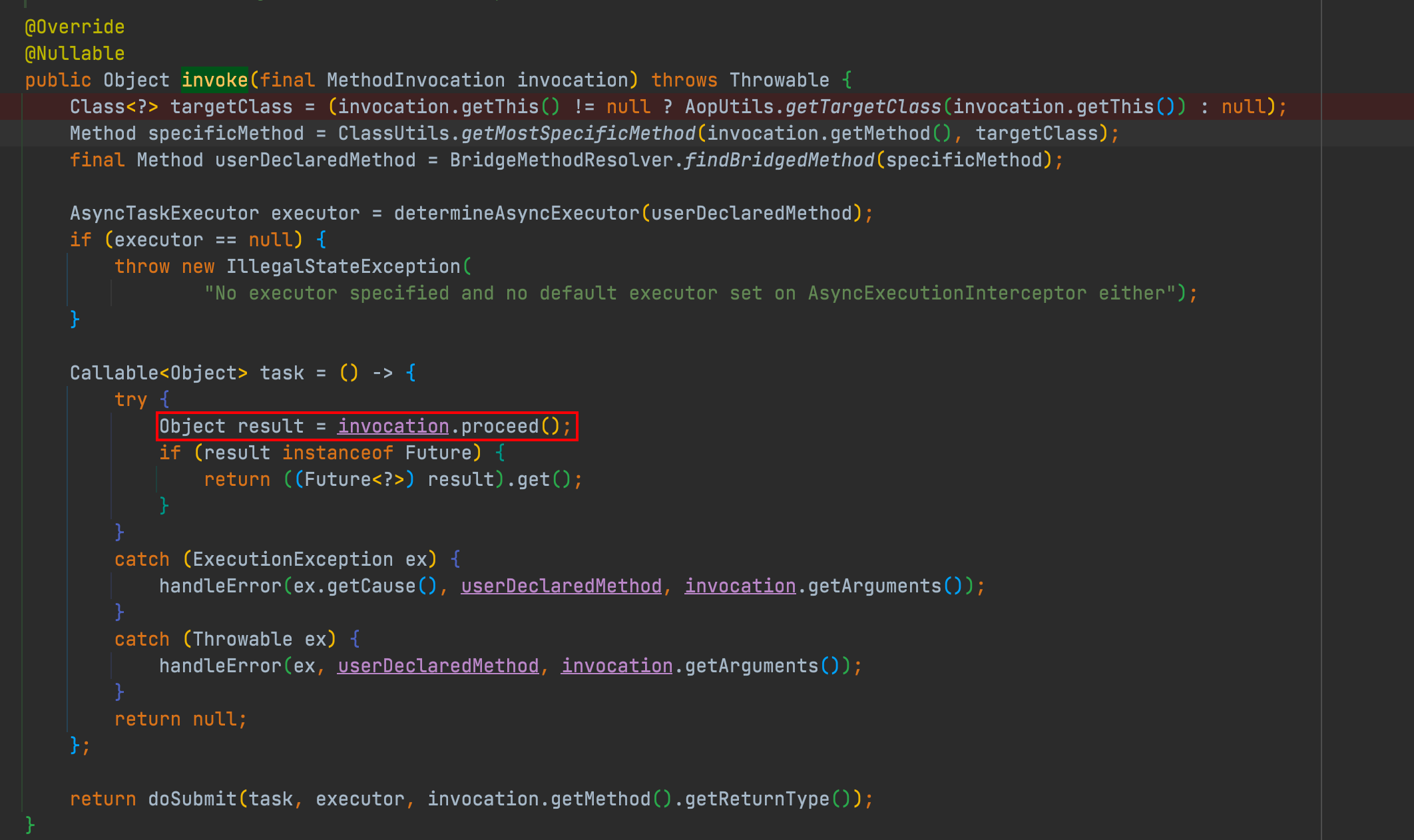Async annotation learn more
[TOC]
@Async annotation
本人通过一步一步debug的方式,来给你揭露
@Async实现的原理。
@Async Demo
如果碰到一个新的注解,有什么功能,实现机制。要怎么去做?
但是我认为不论是从什么角度去下手的,最后一定是会落到源码里面的。
因此,我们写个最简单的例子吧。
首先启动类:
|
再整个业务类:在需要异步处理的逻辑上加伤我们的@Async注解
|
最后加上Controller来调用业务:
|
最后我们通过线程名来看是否异步执行了。
2022-01-09 19:30:05 [http-nio-8080-exec-2] INFO [com.noah.async.controller.HelloController ] >>> thread name:http-nio-8080-exec-2 |
我们发现怎么还是tomcat的线程。这可以说明@Aysnc注解没有生效
@Async failure
当我们平常在写代码,发现代码没有按照我们期望生效的时候,怎么办呢?
- 当然是Google开发工程师啦~~
- 我们从源码分析肯定也能查到为啥没有生效
失效原因:
@SpringBootApplication启动类没有添加@EnableAsync注解- 没有走 Spring 的代理类。因为
@Transactional和@Async注解的实现都是基于 Spring 的 AOP,而 AOP 的实现是基于动态代理模式实现的。那么注解失效的原因就很明显了,有可能因为调用方法的是对象本身而不是代理对象,因为没有经过 Spring 容器管理。
很显然,我这个情况符合第一种情况,没有添加
@EnableAsync注解。另外一个原因,我也很感兴趣,但是现在我的首要任务是把 Demo 搭建好,所以不能被其他信息给诱惑了。
很多同学带着问题去查询的时候,本来查的问题是
@Async注解为什么没有生效,结果慢慢的就走偏了,十五分钟后问题就逐渐演变为了 SpringBoot 的启动流程。再过半小时,网页上就显示的是一些面试必背八股文之类的东西…
我说这个意思就是,查问题就好好查问题。查问题的过程中肯定会由这个问题引发的自己更加感兴趣的问题。但是,记录下来,先不要让问题发散。
这个道理,就和带着问题去看源码一样,看着看着,可能连自己的问题是什么都不知道了。
好了,接下来我们在代码加上@Async:
|
看下运行效果:
2022-01-09 20:07:33 [http-nio-8080-exec-2] INFO [com.noah.async.controller.HelloController ] >>> thread name:http-nio-8080-exec-2 |
好了,符合我们的运行期望,但是我们要知道是怎么样配置的线程池执行的,才放心。
@Async Thread Pool
正常来说,要找到这个线程池,这时候就要去看源码了。
但是我们可以换个思路,我们把线程池压垮,走到线程池的拒绝策略就会把异常抛出吧?
于是我们把程序,稍微修改了下:
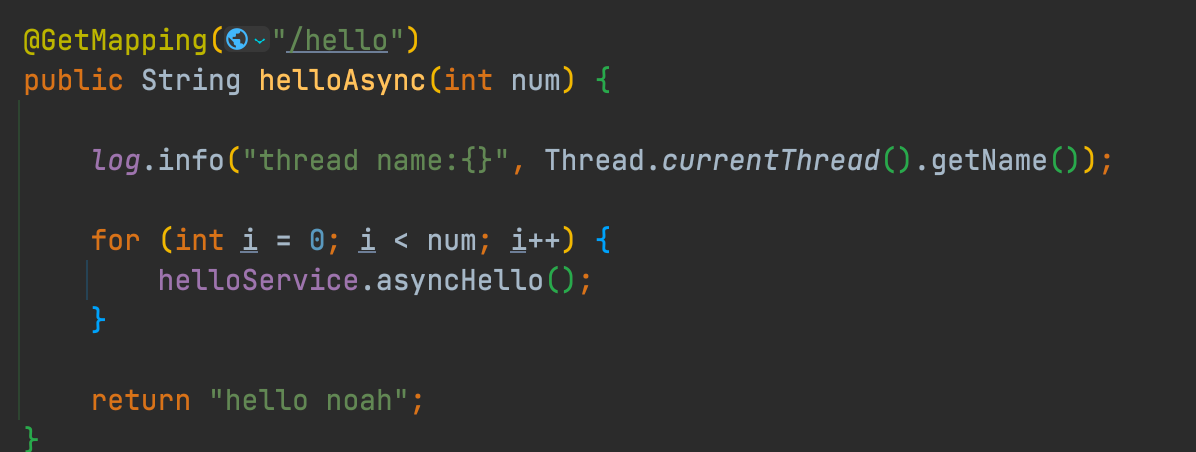
上面是控制器的逻辑,我们传递指定任务大小给线程池。
下面是service逻辑,增加睡眠1s的逻辑

期望能够因为队列满了,把异常信息打出来。
但是结果不是我们期望那样,直接看结果。
下图是初始化的堆大小:
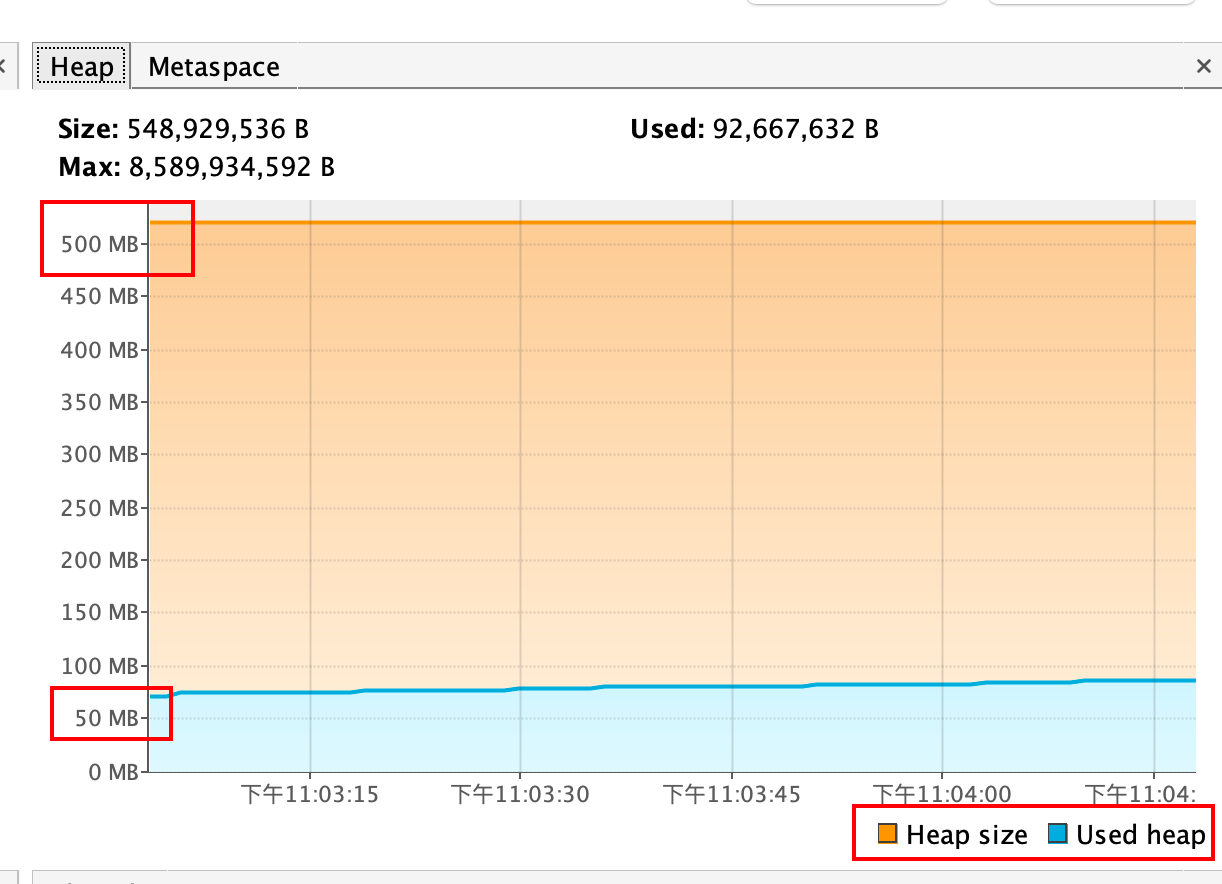
堆大小:500MB,已经使用才50MB。
当我们让线程池仍了1000w数据之后。结果如下图。
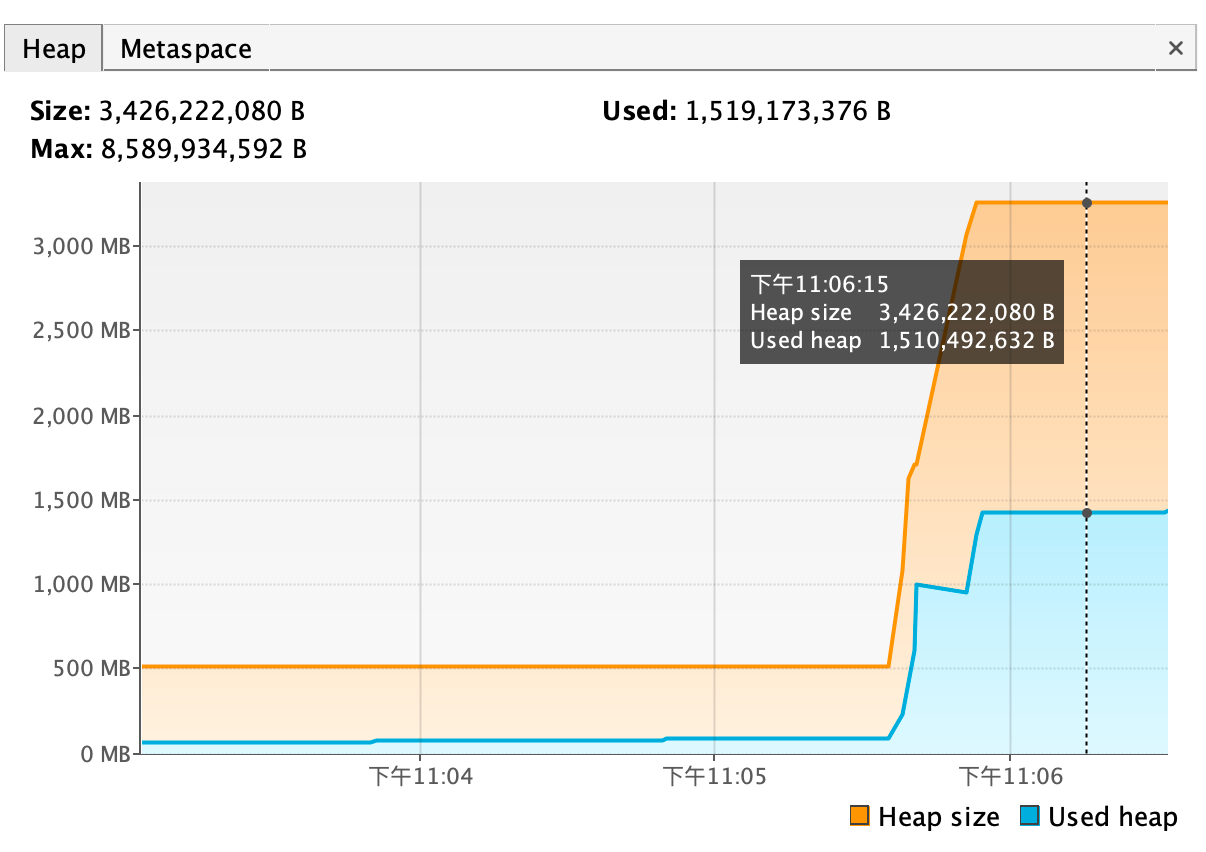
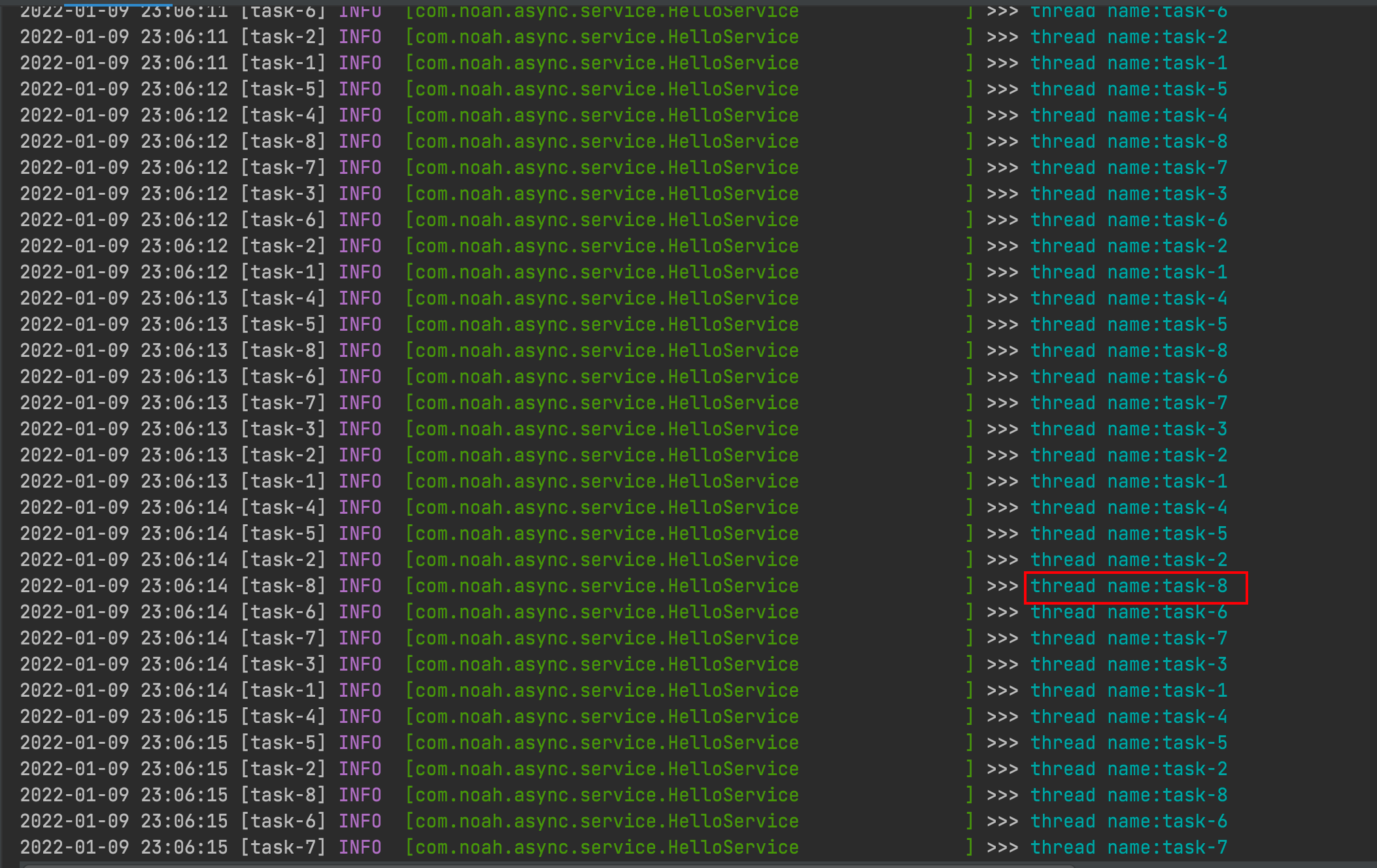
从上面的数据我们可以大胆猜测下,@Async的线程池配置这样的,核心线程数是8。队列长度是Integer.MAX_VALUE。
为什么不能最大线程数是8呢?可以自己思考下。
@Async还在能愉快的消费这数据,到这里,你是否认为:哇,@Async太nb了。千万级别的任务都能处理过来。
你这样认为就大错特错了!!
这里,我们可以引出:
@Async默认线程池有导致内存溢出的风险。
到处我们骚想法:通过抛出异常来看@Async线程池的配置落空了。
@Async Source code
捷径无法实现,那接下来我们认认真真开始啃源码吧。
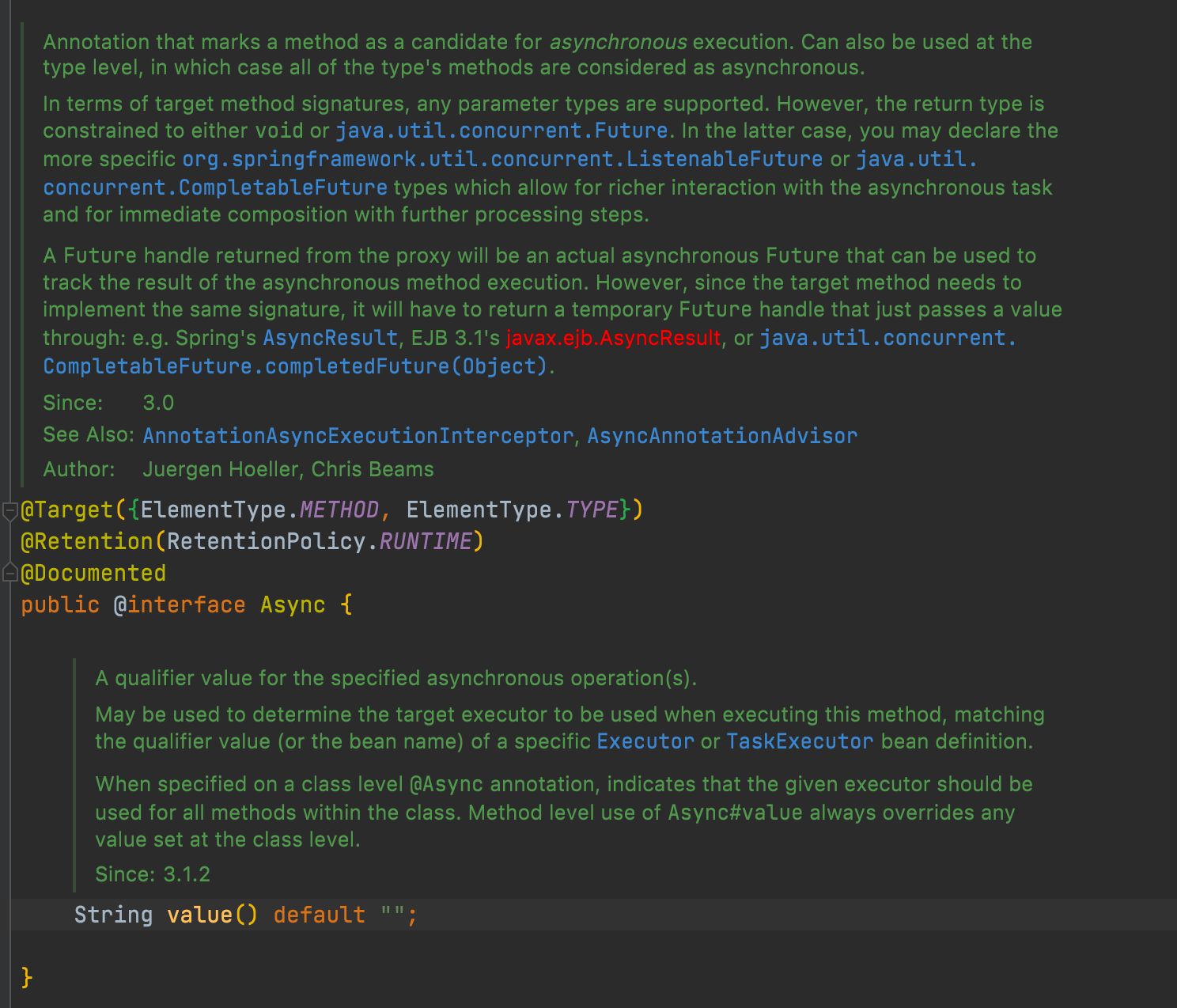
Annotation that marks a method as a candidate for asynchronous execution. Can also be used at the type level, in which case all of the type's methods are considered as asynchronous. |
简单来说:这个注解可以作用在方法和类级别上。
In terms of target method signatures, any parameter types are supported. However, the return type is constrained to either void or java.util.concurrent.Future. |
当我们看到target单词的时候,我们第一反应应该是要出现一个代理对象的概率。但是上面这句话的重点,是在转折后面。返回类型只能是void或者Future。
假设我们一定要返回Integer值会怎么样呢?
|
结论就是返回一个null值,这样就很容易就有空指针。
留个TODO:我们返回为int的基本类型,可以学习了解到AOP的执行流程。
进阶TODO:@trasaction执行流程是怎么样的呢?

idea还是yyds,直接帮我们标记出来。
接下来,我们看看注解的value属性
A qualifier value for the specified asynchronous operation(s). |
我们总结下,我们现在至今了解的信息
- 除了 @Async 注解之外,还需要加上 @EnableAsync 注解,比如加在启动类上。
- 然后把这个默认的线程池当做黑盒测试了一把,我怀疑它的核心线程数默认是 8,队列长度无线长。有内存溢出的风险。
- 通过阅读 @Async 上的注解,我发现返回值只能是 void 或者 Future 类型,否则即使返回了其他值,不会报错,但是返回的值是 null,有空指针风险。
- @Async 注解中有一个 value 属性,看注释应该是可以指定自定义线程池的。
接下来,我们把我们还需要了解@Async的问题列下
- 默认线程池的配置到底是怎么样的?
- 源码是怎么支持只返回void或者Future的?
- value属性是干什么用的?
我们通过value属性,被那些方法调用了,可以直接定位到下面的代码:
根据方法名或者指定线程池,或者返回默认线程池。
|
接下来,我们来卷卷源码:
根据方法返回指定的执行器,空字符串也是返回默认的执行器。see also看方法名,我们也知道:决定异步执行器(方法)
Return the qualifier or bean name of the executor to be used when executing the given method, specified via Async.value at the method or declaring class level. If @Async is specified at both the method and class level, the method's #value takes precedence (even if empty string, indicating that the default executor should be used preferentially). |
我们一步步debug进来,可以看到默认线程池的配置。
beanName:applicationTaskExecutor
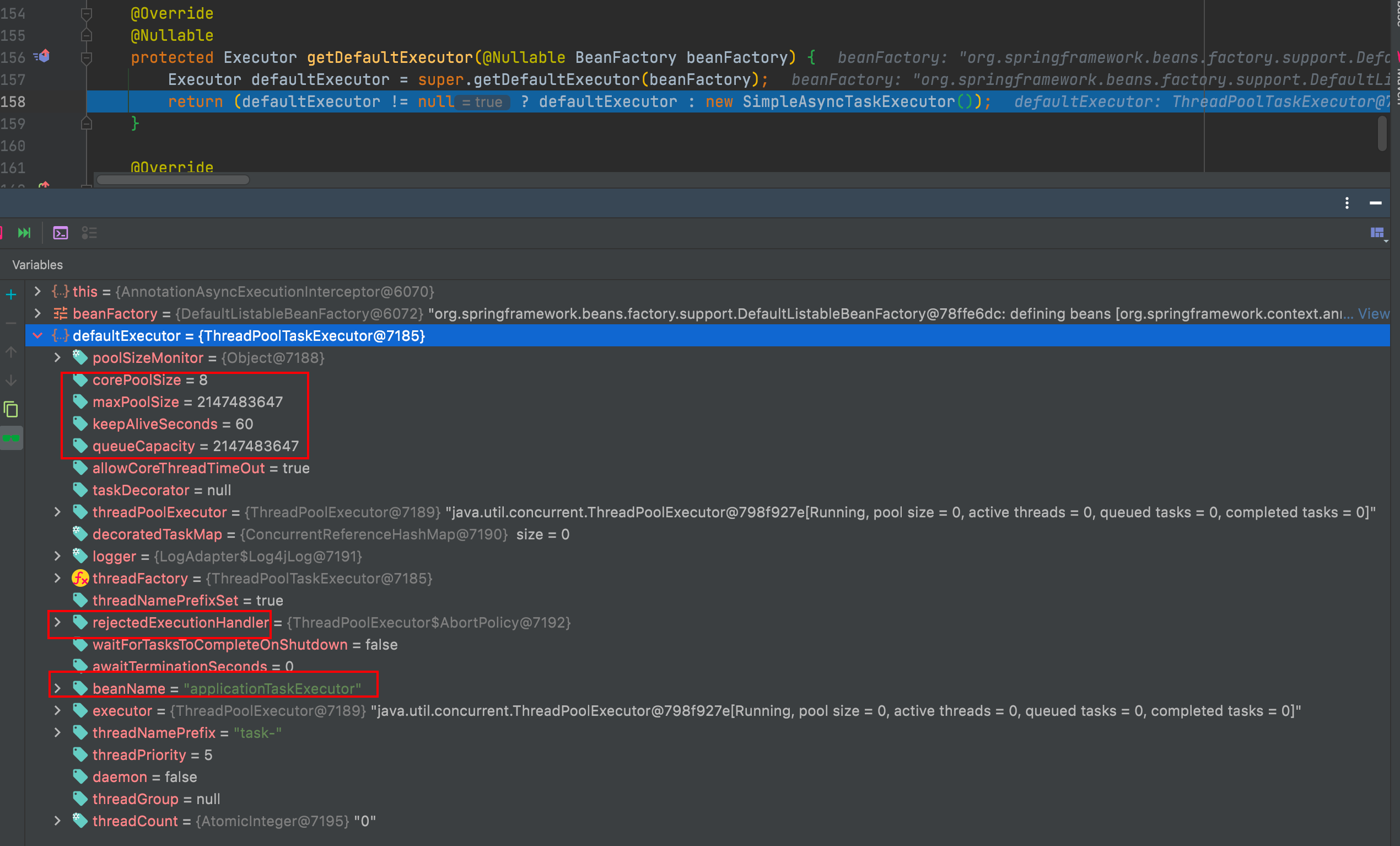
现在我是直接从 BeanFactory 获取到了这个线程池的 Bean,那么这个 Bean 是什么时候注入的呢?
org.springframework.beans.factory.support.AbstractBeanFactory#getBean(java.lang.String),打上断点。找beanName=applicationTaskExecutor- 全局寻找applicationTaskExecutor
- 把spring管理的线程池全部找出来
|
org.springframework.boot.autoconfigure.task.TaskExecutionProperties,一步步debug你会定位到这个配置属性类。
接下来我们一起讨论,为什么只能支持void或者Future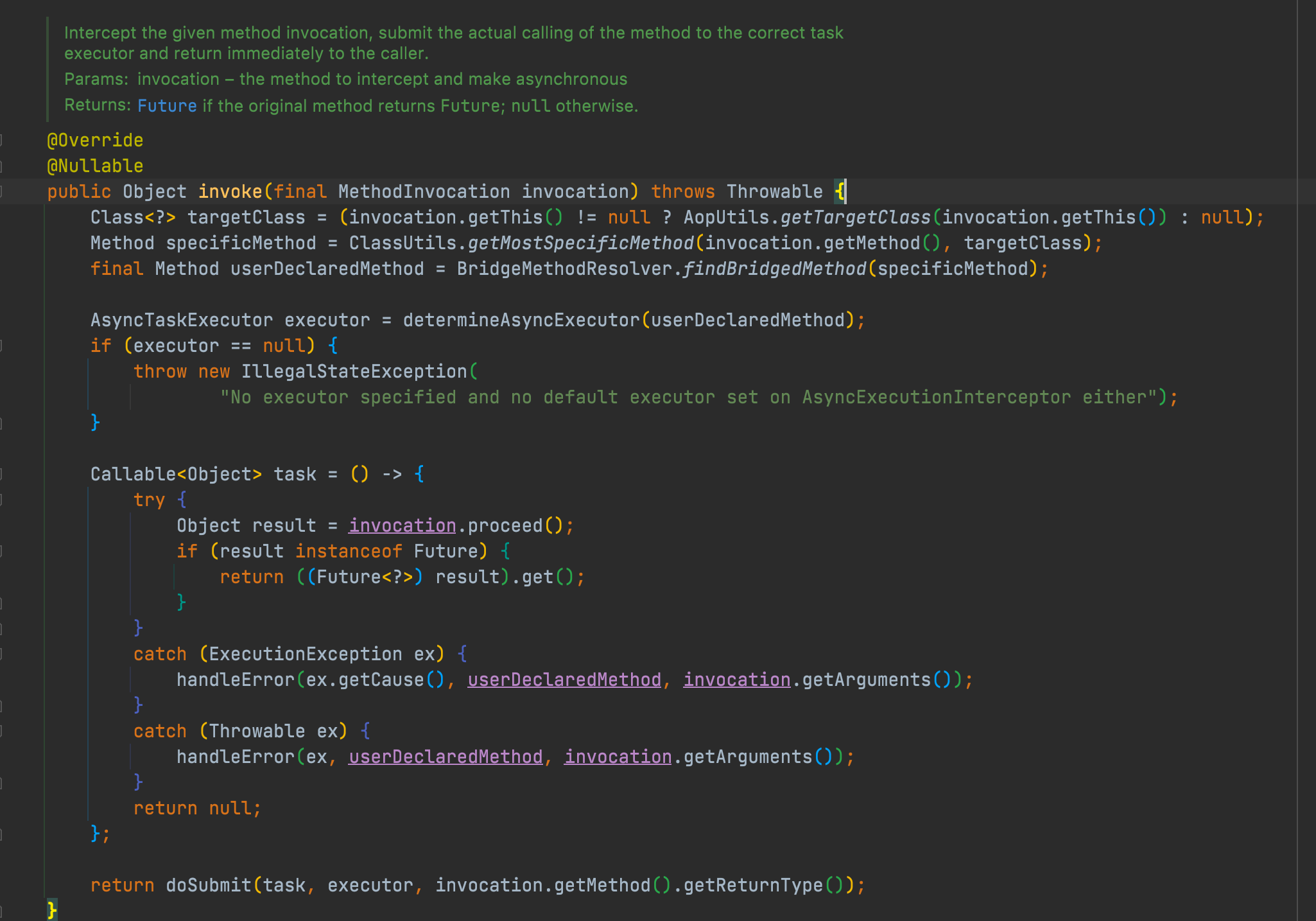
org.springframework.aop.interceptor.AsyncExecutionInterceptor#invoke
上面是拦截器逻辑,真实aop执行的逻辑。我们认真读源码,发现返回逻辑就知道了。
这也是AOP执行的逻辑。我们留下的TODO要在这里展开。
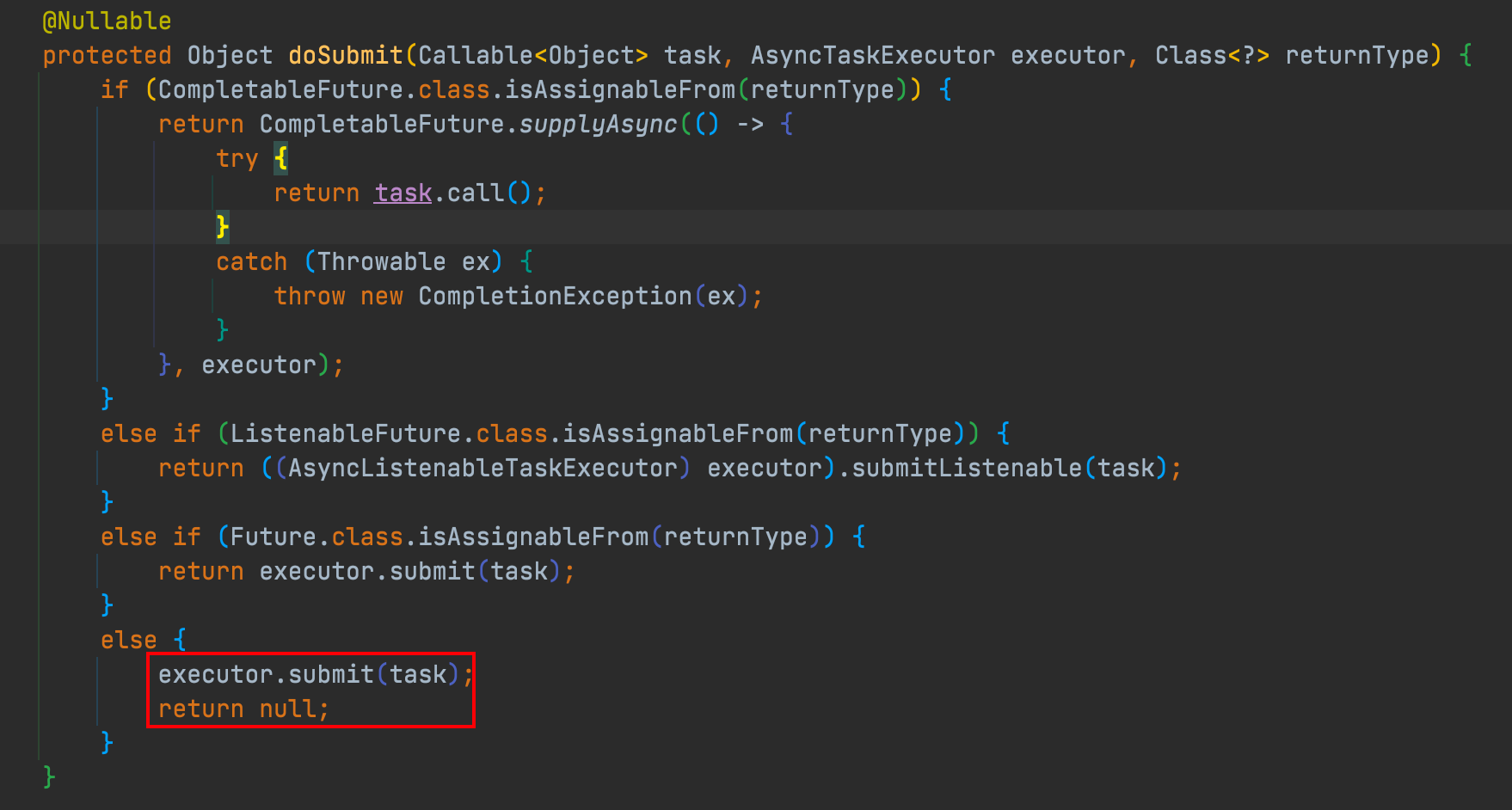
我们展示来看下,真的异步执行的方法doSubmit()逻辑。这里我们可以小小的装个13,为什么呢?因为你这里都直接return null;为什么还要调用executor的submit,来构建future对象。用execute方法直接返回void少一次对象的创建。
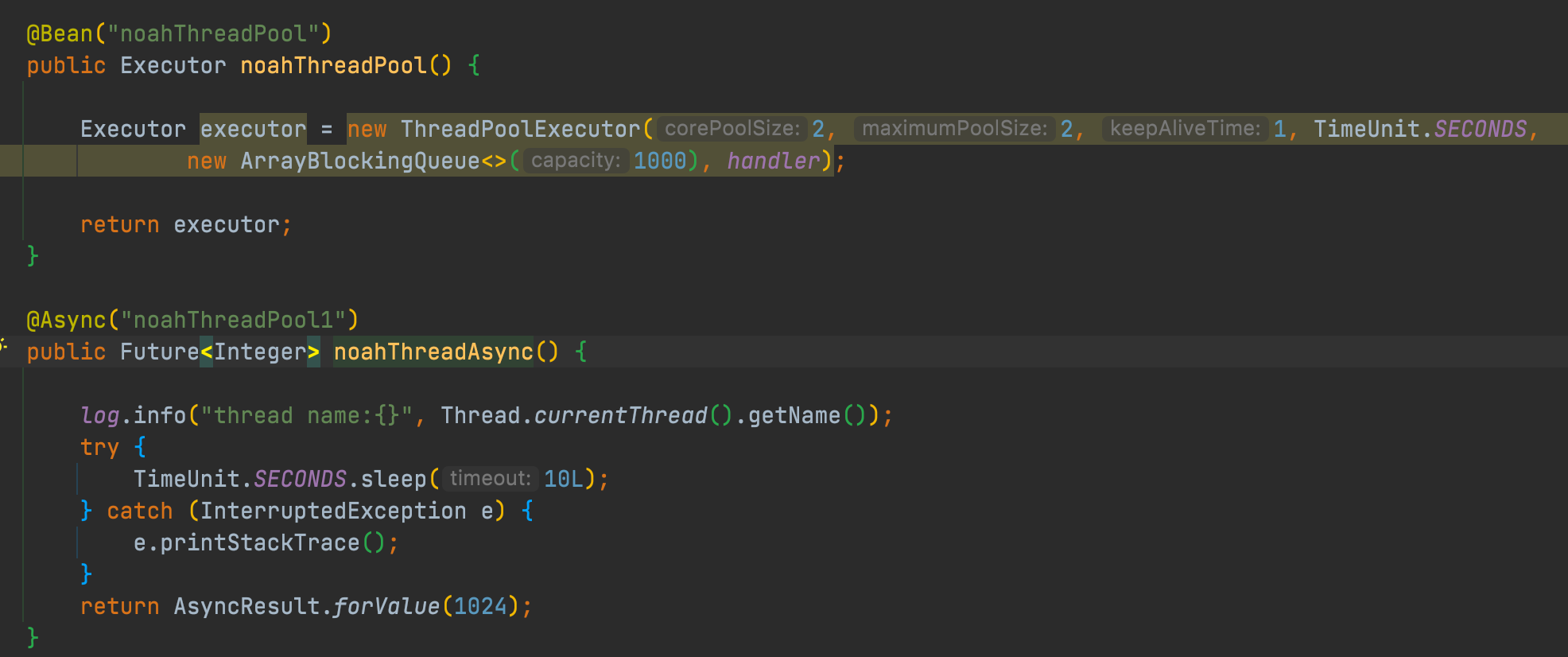
value的作用,自定义线程池。隔离不同业务属性
@Async more
我们来解决我们的todo事项:
留个TODO:我们返回为int的基本类型,可以学习了解到AOP的执行流程。
进阶TODO:@Transactional执行流程是怎么样的呢?
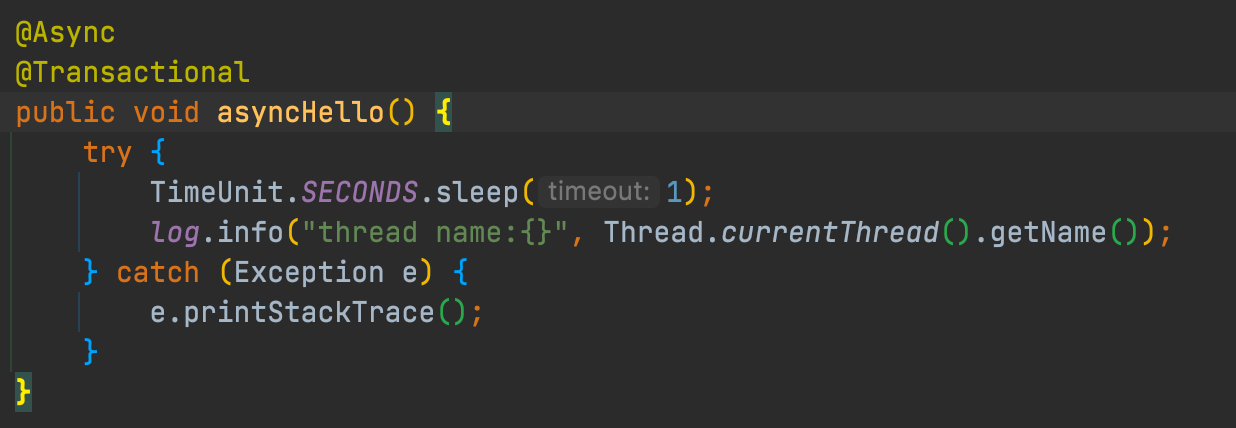
首先我们定义了两个Interceptor。
接下来我们讨论的Cglib的动态代理流程
org.springframework.aop.framework.CglibAopProxy.DynamicAdvisedInterceptor
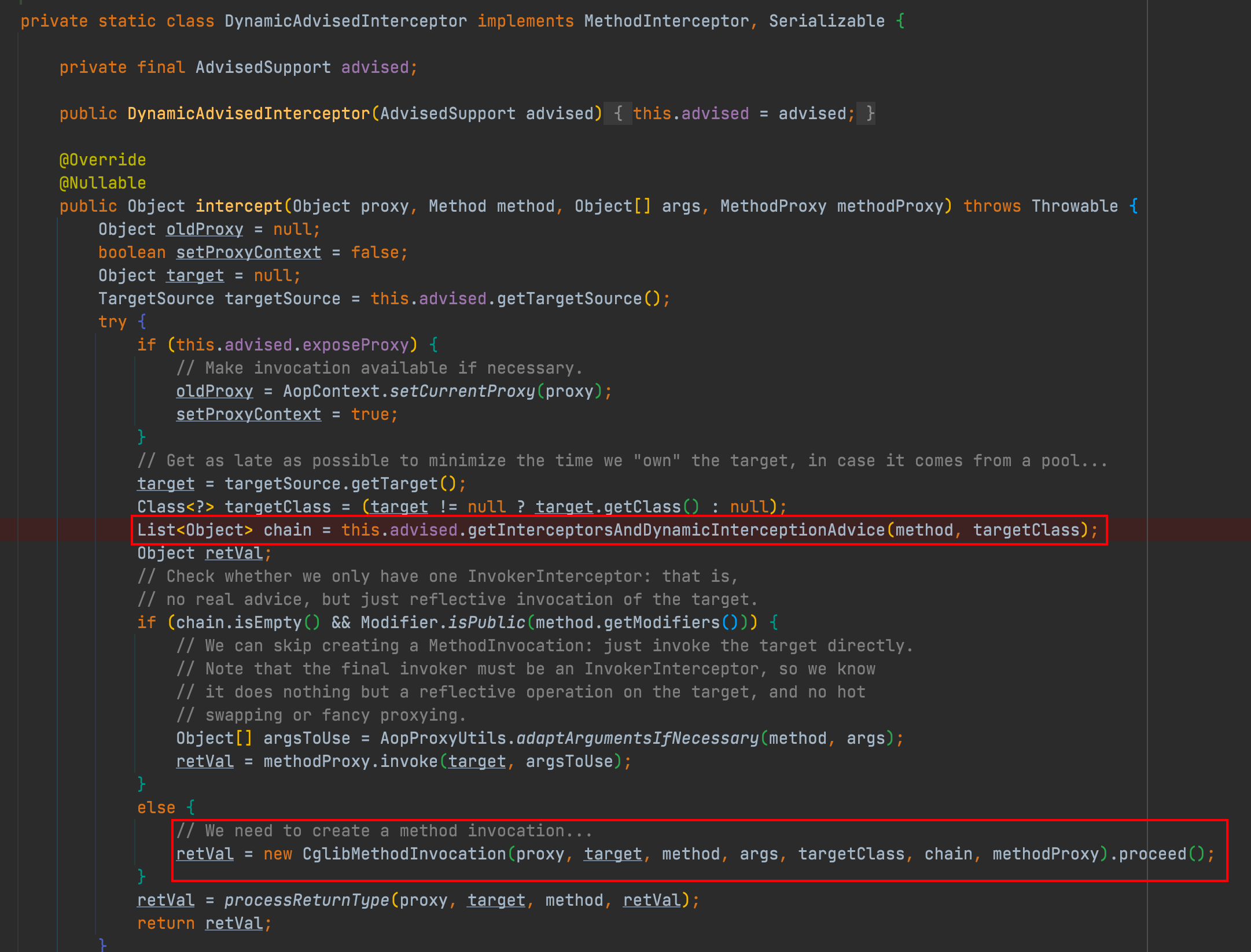

获取通过代理对象,执行的拦截器顺序。
org.springframework.aop.framework.ReflectiveMethodInvocation#proceed
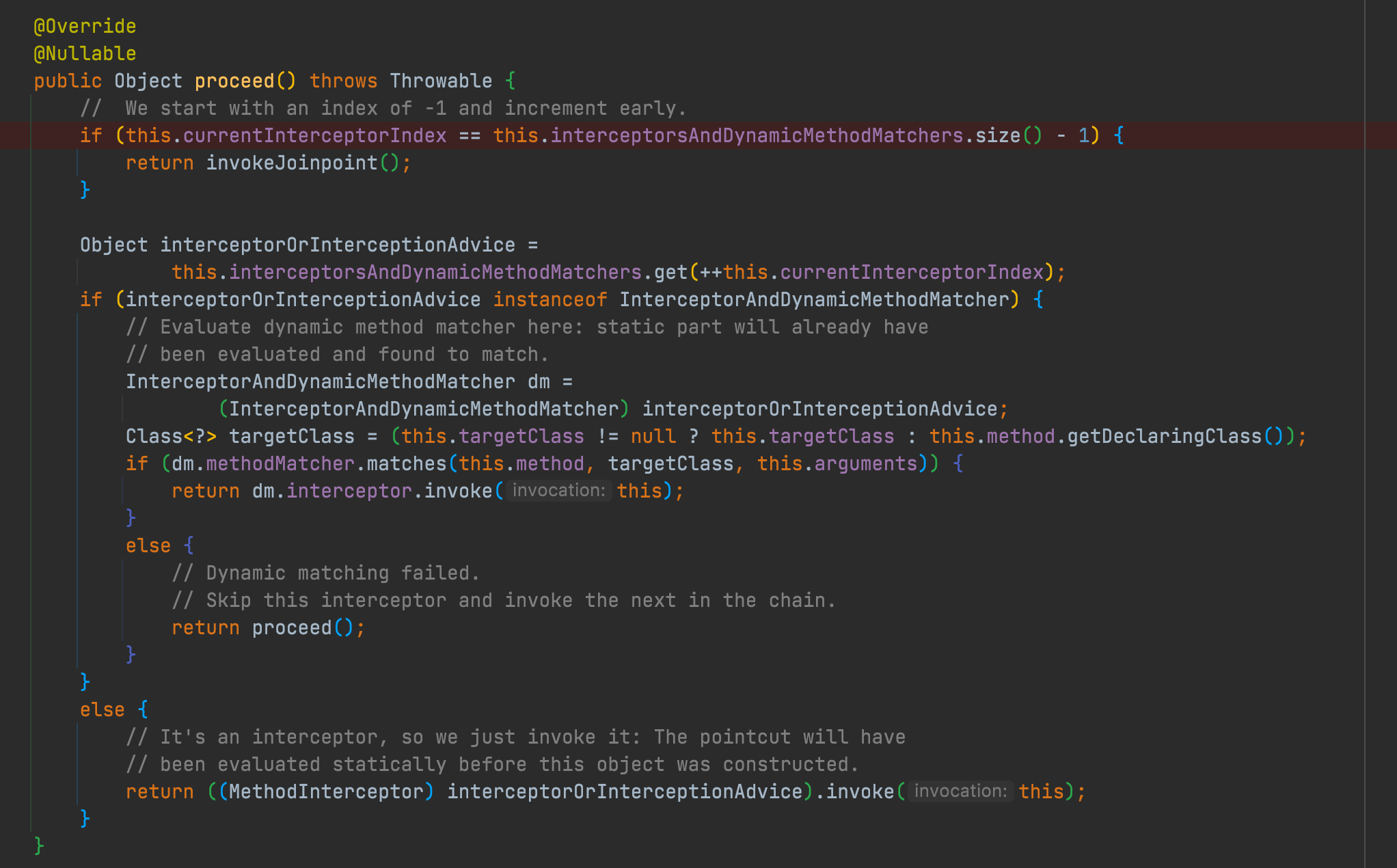
这是proceed的处理逻辑,只有拦截器的代码逻辑执行完了,才执行本身的方法。
接下来我们看2个具体的拦截器执行流程:
org.springframework.transaction.interceptor.TransactionInterceptor#invoke

org.springframework.aop.interceptor.AsyncExecutionInterceptor#invoke
